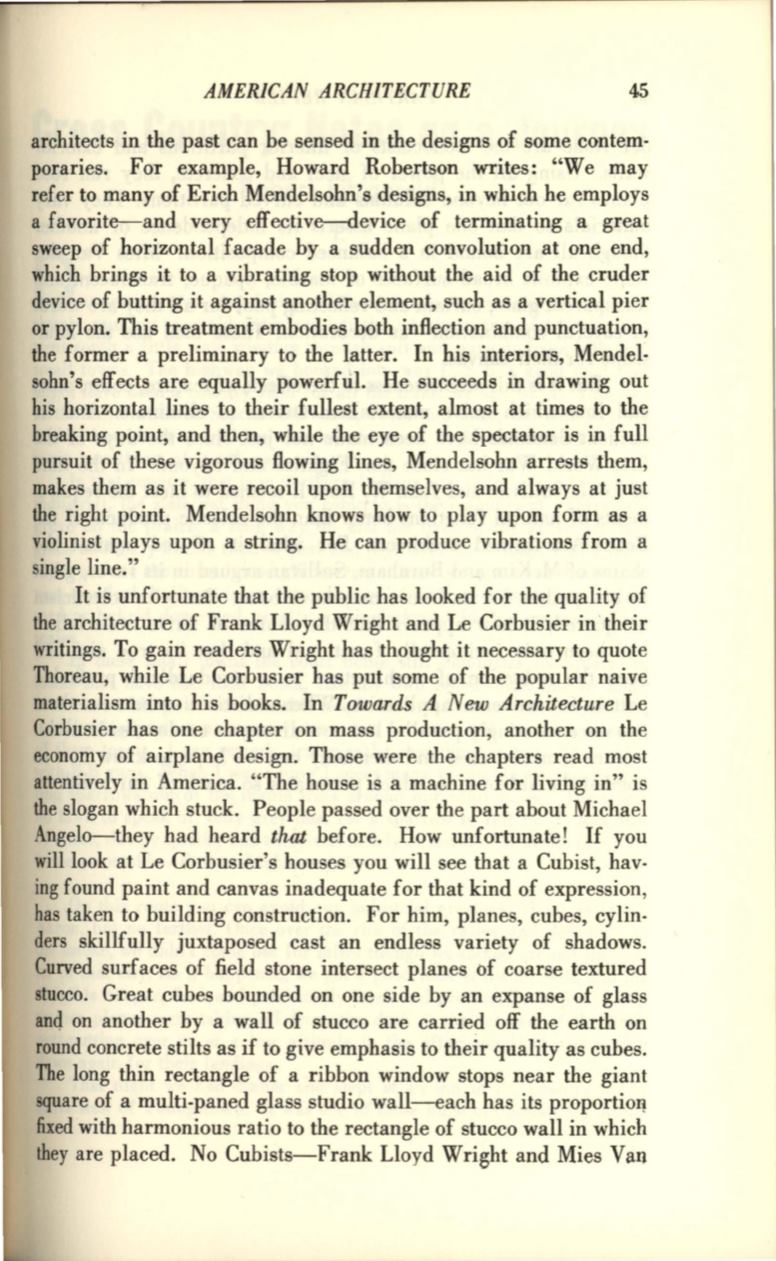
AMERICAN ARCHITECTURE
45
architects in the past can be sensed in the designs of some contem–
poraries. For example, Howard Robertson writes: "We may
refer to many of Erich Mendelsohn's designs, in which he employs
a favorite-and very effective--device of terminating a great
sweep of horizontal facade by a sudden convolution at one end,
which brings it to a vibrating stop without the aid of the cruder
device of butting it against another element, such as a vertical pier
or pylon. This treatment embodies both inflection and punctuation,
the former a preliminary to the latter. In his interiors, Mendel–
sohn's effects are equally powerful. He succeeds in drawing out
his horizontal lines to their fullest extent, almost at times to the
breaking point, and then, while the eye of the spectator is in full
pursuit of these vigorous flowing lines, Mendelsohn arrests them,
makes them as it were recoil upon themselves, and always at just
the right point. Mendelsohn knows how to play upon form as a
violinist plays upon a string. He can produce vibrations from a
single line."
It is unfortunate that the public has looked for the quality of
the architecture of Frank Lloyd Wright and Le Corbusier in their
writings. To gain readers Wright has thought it necessary to quote
Thoreau, while Le Corbusier has put some of the popular naive
materialism into his books. In
Towards A New Architecture
Le
Corbusier has one chapter on mass production, another on the
economy of airplane design. Those were the chapters read most
attentively in America. "The house is a machine for living in" is
the slogan which stuck. People passed over the part about Michael
Angelo-they had heard
that
before. How unfortunate!
If
you
will
look at Le Corbusier's houses you will see that a Cubist, hav–
ing found paint and canvas inadequate for that kind of expression,
has taken to building construction. For him, planes, cubes, cylin–
ders skillfully juxtaposed cast an endless variety of shadows.
Curved surfaces of field stone intersect planes of coarse textured
stucco. Great cubes bounded on one side by an expanse of glass
anq on another by a wall of stucco are carried off the earth on
round concrete stilts as if to give emphasis to their quality as cubes.
The long thin rectangle of a ribbon window stops near the giant
square of a multi-paned glass studio wall-each has its proportioJ!
fixed with harmonious ratio to the rectangle of stucco wall in which
they are placed. No Cubists-Frank Lloyd Wright and Mies Van


